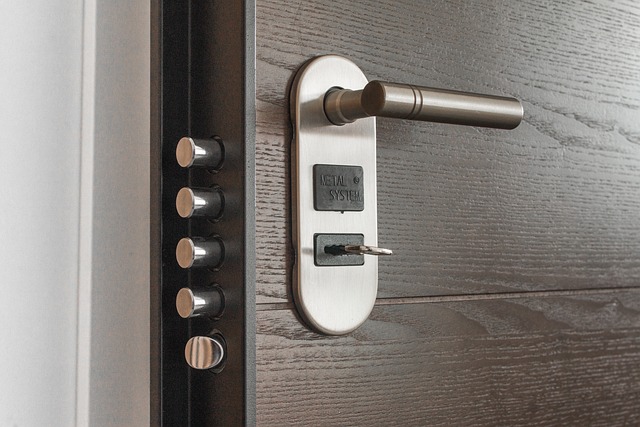Rural communities face unique security challenges due to their remote locations and dispersed populations. To address this, implementing tailored rural home surveillance systems is crucial. These systems include robust outdoor security cameras designed for harsh weather conditions and extensive property coverage. Wireless surveillance, leveraging long-range surveillance cameras with motion activation and solar-powered cameras, offers flexibility, sustainability, and reduced environmental impact for remote areas with limited infrastructure. These advanced solutions not only strengthen security but also promote eco-friendly practices.
In today’s digital era, ensuring rural security while minimizing environmental impact is a growing priority. This article explores eco-friendly systems for sustainable rural surveillance, addressing the unique challenges faced by remote communities. We delve into the benefits of wireless surveillance solutions, such as long-range cameras and solar-powered models, ideal for remote properties. By examining key components and implementation strategies, we unveil how motion-activated technology can enhance safety without compromising natural landscapes.
- Understanding the Unique Challenges of Rural Security
- The Benefits and Applications of Eco-Friendly Surveillance Systems
- Key Components of a Sustainable Rural Surveillance System
- Implementation and Future Prospects for Green Rural Security Solutions
Understanding the Unique Challenges of Rural Security

Rural areas face distinct challenges when it comes to security due to their often remote locations and dispersed communities. Traditional surveillance systems may not be suitable for these environments, where limited infrastructure and long distances can hinder effective monitoring. Implementing rural home surveillance systems requires a tailored approach that considers the unique needs of the region. Outdoor security cameras for rural areas need to be robust enough to withstand harsh weather conditions and have a good range to cover extensive properties.
Wireless surveillance for remote properties is gaining popularity as it offers flexibility and ease of installation. Long-range surveillance cameras with advanced features like motion activation can deter potential intruders while conserving battery life, ideal for solar-powered cameras designed for rural homes. These solutions not only enhance security but also contribute to sustainable practices by utilizing renewable energy sources.
The Benefits and Applications of Eco-Friendly Surveillance Systems

Eco-friendly surveillance systems offer a sustainable and effective solution for rural home security, harnessing technology to protect remote properties while minimizing environmental impact. These innovative systems, such as wireless surveillance setups and long-range cameras, are designed with nature in mind. They eliminate the need for extensive wiring and power grids by utilizing renewable energy sources like solar power, making them ideal for remote areas where traditional infrastructure is limited.
The applications of these eco-friendly systems are vast. Outdoor security cameras can monitor rural homes and properties around the clock, detecting motion and sending alerts to homeowners. Solar-powered cameras ensure continuous surveillance without contributing to carbon footprints associated with energy consumption. Motion-activated features further enhance their efficiency, only capturing footage when necessary, saving storage space and reducing data costs. This technology is a game-changer for rural communities seeking secure and sustainable solutions to protect their homes and land.
Key Components of a Sustainable Rural Surveillance System

In the context of sustainable rural surveillance, several key components work together to create an effective and eco-friendly system. One of the cornerstones is outdoor security cameras for rural areas that are designed with long-range capabilities, ensuring comprehensive monitoring of vast properties. These cameras, often equipped with advanced features like high resolution and night vision, play a pivotal role in deterring potential intruders while offering peace of mind to rural homeowners.
Complementing these cameras, wireless surveillance for remote properties offers unparalleled flexibility and accessibility. Solar-powered cameras, specifically tailored for rural homes, stand out due to their self-sustaining nature. They harness renewable energy from the sun, eliminating the need for frequent battery replacements or power connections. Additionally, motion-activated cameras for rural properties are highly sensitive, triggering only when necessary, which conserves battery life and reduces false alerts, thereby contributing to a more sustainable overall system.
Implementation and Future Prospects for Green Rural Security Solutions

The implementation of eco-friendly, green security solutions in rural areas offers a promising path towards sustainable surveillance and safety. Rural home surveillance systems that integrate renewable energy sources like solar power are gaining traction. These solar-powered cameras for rural homes not only provide long-range surveillance but also contribute to environmental sustainability by reducing the carbon footprint associated with traditional wired systems. Wireless surveillance for remote properties, utilizing motion-activated cameras, is another innovative approach. This technology allows for efficient monitoring of vast agricultural lands or isolated residential areas without the need for complex infrastructure.
Looking ahead, future prospects for green rural security solutions are bright. As technological advancements continue, we can expect more sophisticated outdoor security cameras for rural areas that offer enhanced night vision, improved data transmission, and better integration with existing smart home systems. The potential for these technologies to foster a safer and more sustainable rural environment is significant. By embracing eco-friendly approaches, rural communities can ensure their long-term resilience while protecting natural resources and maintaining the unique character of their landscapes.
Eco-friendly systems offer a promising solution to enhance rural security while preserving the environment. By leveraging technology such as solar-powered cameras, wireless surveillance, and long-range monitoring, rural homeowners can protect their properties effectively. Motion-activated sensors ensure efficient energy use, making these systems ideal for remote areas. Implementing these sustainable rural surveillance systems not only addresses security concerns but also contributes to a greener future, providing a comprehensive approach to safeguarding our communities and natural resources.
